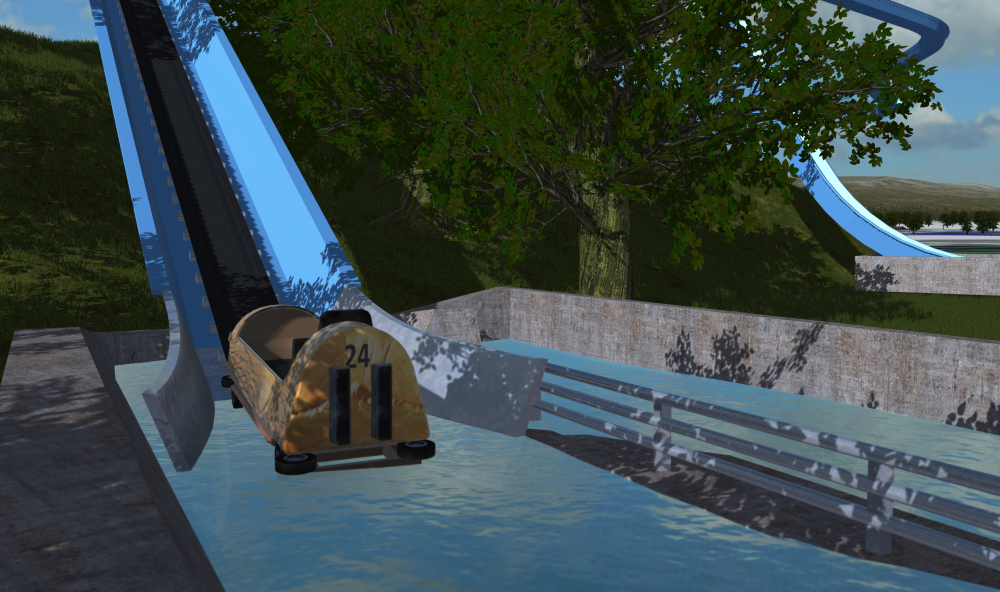As a hobby project, I’m currently making a mini game. Where you can walk through a production facility and for instance, turn on machines inside.
Below is an example of a glass that is set up in Unreal Engine.
In my spare time, i also created a Rainmeter skin for use on my own PC’s.
Rainmeter is a desktop customization tool. You can show the weather on your desktop, a calendar, a clock, or various other things. Which include monitoring of system stats in any way shape or form you want.
I’ve created mine as a basic one which can be easily adapted for any system, so it works with different CPU core counts, multi-GPU setups and so forth.
It can be used as a sidebar for instance, or above the taskbar:
This project began with the idea of building a desktop PC from wood.
A Japanese theme seemed very fitting with this build.
The main goal was to create a PC that was clean and as quiet as possible. That’s why it has no hard drives, but only SSD’s.
The large number of fans isn’t really necessary in terms of cooling capacity, but allows running them all at very low RPM’s, to keep it quiet.
To get the case itself to be as clean as possible, every possible connector or button was removed. This added the challenge of housing them externally.
This was done by designing a Japanese figure, which is standing on top of the external DVD player.
Below is shown how I designed the inside of the figure in a way that all the cables would fit.
Lots of parts were designed and custom made, but other of the shelf parts, were modified, like the GPU cooler for instance.
Below an example of a custom part, the wooden fan grille with dust filters.
The testing of the hardware and the early stages of the woodwork.
And the end result:

The idea for this started about three years ago, when a started to get more serious with 3D-modeling, rendering and making simulations.
So when the X99 platform was introduced, i decided that would be a good moment to build the workstation.
Because the system can be at 100% load when rendering, cooling had to be a priority.
The hard drive cage was removed to allow for better airflow and the SSD and SSHD were combined and housed in the 5,25″ bay.
To accomplish this, a custom bracket was created to mount the SSD to the SSHD in order to fit them both in a single 5,25″ bay.
The color scheme of the build is black with orange details, so almost every component was customized to fit this theme.
Below are some examples, like recoloring LED’s, logo’s fans and cables.
For the first year the system ran aircooled, but the plan always was to do a custom water loop, especially since the reference GPU cooler made it run very hot and loud.
In the meantime, I started creating cable combs and started planning the water loop.
Below a schematic of what I had in mind:
Then, a year later, the real work began. Because the case was quite small, it had to be extensively modified to fit the radiators, fans, pump and hoses.
Even a section of the floor had to be cut out in order to accommodate the 280mm front radiator.
A few custom metal plates were designed and manufactured, to serve as back plates, covers and mounts.
Also, the CPU and GPU blocks could be fitted:
Next up, was test fitting everything, pressure testing and filling the water loop.
Then the last job, the tedious work of cable management begun:
But the final result was worth all the effort.
This project started out as making a simulation of just one track and kept on expanding, so the idea became to do a large section of the park.
The track which started the project was Balder. At first, the track was recreated using FVD++ (a force vector design program). This way, an accurate representation can be made.
Next up, was creating the trains. These were created in Solidworks and kept as simple as possible, while still maintaining enough detail. This was done to minimize the polygon count.
The trains were textured in Blender, since this supports better UV mapping.
The track was imported in to NoLimits from FVD++ and all the woodwork was then done in NoLimits and a script was created to get the custom trains working.
The next ride to recreate was Kanonen. This was a quite short but complex track.
The image below was created to check the loop shaping / geometry. The recreated track was used as a green overlay.
Below is another comparison between the track in FVD++ and the real track.
I also started some work on the trains from Helix.
The part I’m still working on is the log flume. This time, not only the logs were created in Solidworks, but also the entire track.
The biggest challenge with this, is to get the animations as realistic as possible, both the movement of the logs and the splash effects.
